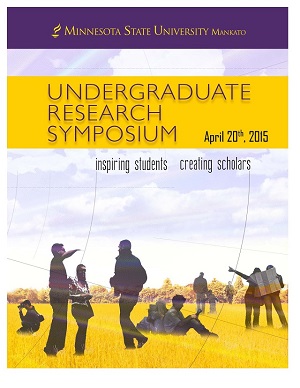Event Title
Quantifying How Long Learning Takes: A Look at Machine Learning and Blackjack
Location
CSU Ballroom
Start Date
20-4-2015 2:00 PM
End Date
20-4-2015 3:30 PM
Student's Major
Integrated Engineering
Student's College
Science, Engineering and Technology
Mentor's Name
Rebecca Bates
Mentor's Email Address
rebecca.bates@mnsu.edu
Mentor's Department
Integrated Engineering
Mentor's College
Science, Engineering and Technology
Second Mentor's Name
Dean Kelley
Second Mentor's Email Address
dean.kelley@mnsu.edu
Second Mentor's Department
Computer Information Science
Second Mentor's College
Science, Engineering and Technology
Third Mentor's Name
Jennifer Veltsos
Third Mentor's Email Address
jennifer.veltsos@mnsu.edu
Third Mentor's Deparment
English
Third Mentor's College
Arts and Humanities
Description
Machine learning is a form of artificial intelligence that allows a computer program to learn the most optimal way to act, instead of following explicitly programmed instructions. It is a form of pattern recognition that is being implemented and experimented with in many different fields and areas. The overall goal of this work is to find out how long it takes for machine learning to perform optimally in the simple game of black jack. We expect to distinguish the relationship between number of training hands played and how well the agent performs. To do this we are working to design a machine learning agent that has no knowledge of the game of blackjack. The agent is given X amount of training hands to play. These hands are randomly generated from a shoe of 6 decks and each deck is re-shuffled upon reaching the near end of the shoe. Each hand the agent is dealt, along with the dealer’s up card, is stored in a data structure that represents this pairing. The agent will then hit or stay randomly and the result of whether they lost or not is tracked. After these X training hands have been completed, the agent then plays a large number of new hands using the statistics of which option (hitting or staying) failed the least during the training hands to make its decisions. We expect that as the number of training hands an agent has played rises, so will percentage of hands it wins.
Quantifying How Long Learning Takes: A Look at Machine Learning and Blackjack
CSU Ballroom
Machine learning is a form of artificial intelligence that allows a computer program to learn the most optimal way to act, instead of following explicitly programmed instructions. It is a form of pattern recognition that is being implemented and experimented with in many different fields and areas. The overall goal of this work is to find out how long it takes for machine learning to perform optimally in the simple game of black jack. We expect to distinguish the relationship between number of training hands played and how well the agent performs. To do this we are working to design a machine learning agent that has no knowledge of the game of blackjack. The agent is given X amount of training hands to play. These hands are randomly generated from a shoe of 6 decks and each deck is re-shuffled upon reaching the near end of the shoe. Each hand the agent is dealt, along with the dealer’s up card, is stored in a data structure that represents this pairing. The agent will then hit or stay randomly and the result of whether they lost or not is tracked. After these X training hands have been completed, the agent then plays a large number of new hands using the statistics of which option (hitting or staying) failed the least during the training hands to make its decisions. We expect that as the number of training hands an agent has played rises, so will percentage of hands it wins.
Recommended Citation
Lindquist, Dustin. "Quantifying How Long Learning Takes: A Look at Machine Learning and Blackjack." Undergraduate Research Symposium, Mankato, MN, April 20, 2015.
https://cornerstone.lib.mnsu.edu/urs/2015/poster_session_B/29



